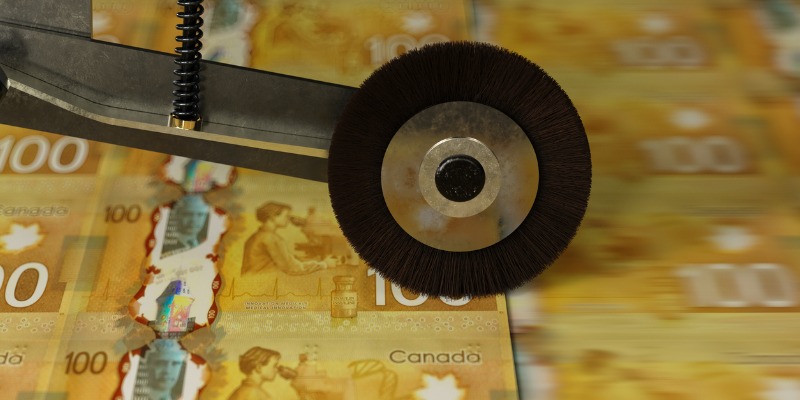Learn from ‘Nixon shock’—control central bankers, limit ability to debase currency

This Sunday, Aug. 15 marks the 50th anniversary of the so-called “Nixon shock” in 1971 when then President Richard Nixon ended the convertibility of the U.S. dollar into gold. Although Nixon said the suspension would be temporary, and reassured Americans that the surprise move would “stabilize the dollar,” these were false promises. The closing of the gold window led to the 1970s “stagflation” and transformed the patterns of income and wealth inequality that concern so many today. A program of sound money, where central banks are held to strict rules, would promote more stable economic growth and reduce the concentration of gains accruing to the financial sector.
Under the Bretton Woods system enacted at the end of the Second World War, the classical gold standard was replaced by what was effectively a U.S. dollar exchange standard. Under Bretton Woods, the participating countries each pegged their national currencies to the dollar at a fixed exchange rate, while the dollar itself was tied to gold at the official rate of $35 per ounce.
We should note just how tepid the Bretton Woods framework was, compared to the pre-First World War classical gold standard. Back in 1913, anyone could present U.S. currency to the authorities to receive gold (then at the rate of $20.67 per ounce). This provided a check on inflation—if U.S. authorities printed too many dollars, it would weaken the dollar against other currencies (such as the British pound) and eventually set up an arbitrage where speculators would turn in dollars for gold in New York, ship the gold across the Atlantic to London, present the gold for pounds, then go to the forex market to turn their British pounds back into more U.S. dollars than they started with. Thus if the U.S. inflated too aggressively, it would lose gold to other countries.
Yet under Bretton Woods, only other central banks were allowed to present U.S. dollars to the American government for redemption in gold. Moreover, in practise even this formal power was pooh-poohed. When the Federal Reserve inflated the money supply in the 1950s and 1960s to pay for the Korean and Vietnam wars, for example, this fuelled domestic inflation and contributed to trade deficits (as foreign imports became relatively cheaper than U.S.-made goods). Under Bretton Woods, rather than settling up in gold, America’s trading partners were encouraged to reconcile trade deficits by stockpiling dollar-denominated financial assets such as U.S. government bonds.
Eventually this situation became unacceptable to those who did not enjoy the Americans’ “exorbitant privilege.” For example, French president Charles de Gaulle famously announced his intention (in 1965) to exchange his country’s dollar assets for gold. These pressures eventually led Nixon to announce that the United States would no longer even allow foreign central banks to redeem dollars for gold.
During his Aug. 15, 1971 television address, Nixon said, “Let me lay to rest the bugaboo of what is called devaluation... If you are among the overwhelming majority of Americans who buy American-made products in America, your dollar will be worth just as much tomorrow as it is today. The effect of this action... will be to stabilize the dollar.”
Reality proved just the opposite. The price of gold went from $35 per ounce in 1970 to more than $800 per ounce in early 1980. Twelve-month increases in the U.S. Consumer Price Index went from 6 per cent in early 1970 to more than 14 per cent in early 1980. As then-chair of the Federal Reserve, Paul Volcker’s efforts to rein in inflation led to the awful recessions in the early 1980s, the worst Americans had experienced since the Great Depression.
Moreover, various statistics showing disturbing trends in income and wealth inequality all have their turnarounds not during the Reagan years in the 1980s, but rather around 1973—the first recession occurring after Nixon unleashed the monetary spigot. This is not surprising because financial speculators can make money even amidst unpredictable price inflation. It’s regular workers who punch a clock and must renegotiate their wages who fall behind when consumer prices soar.
Richard Nixon’s closing of the gold window in 1971 was a momentous decision that unleashed inflation and disadvantaged wage earners. Right-wingers who want economic growth and left-wingers who want more balanced income gains should both support reforms that tie the hands of central bankers and limit their ability to debase the currency.
Author:
Subscribe to the Fraser Institute
Get the latest news from the Fraser Institute on the latest research studies, news and events.

